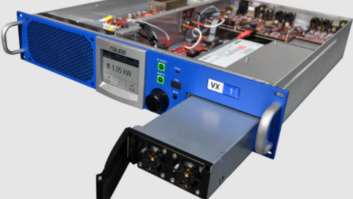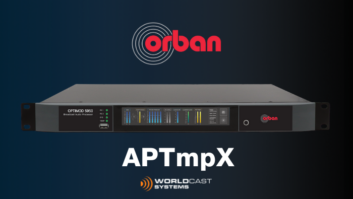Radio has weathered its share of tough times over the years, but the clouds currently gathering may be harbingers of serious difficulty ahead for the industry. These multiple forces could soon test radio’s mettle like never before.
Consider the following elements that could conspire to create a worst-case scenario soon.
The well-known issue of falling revenues leads the list and sets the overall context. Declines have been registered steadily at most stations for the last 18 months or more — and that’s before factoring in the more precipitous declines in advertising expected from the current economic downturn.
Meanwhile, audiences are at best growing slowly and for the most part are generally flat or declining. Add to this the disruptive element of the PPM’s ongoing rollout plus the tightening credit market’s squeeze on radio owners’ debt load, and you have all the makings of a looming crisis designed by Murphy himself.
This world-class pickle has been noted even by the mainstream press, with articles on the subject appearing recently in the New York Times and the Wall Street Journal, among others.
For my next trick …
Can radio pull another rabbit out of its hat to counteract this impending threat?
Let’s look at the inventory of items that might provide such magic and the context in which they might exist.

stockxchng/Kriss Szkurlatowski First, it’s critical to understand the relationships of broadcast radio’s two new fronts on which to pursue growth: HD Radio and the Internet. Unfortunately they are quite different environments, both from each other and to some extent from radio’s traditional business. This means that a single, simplistic strategy and business model — which worked pretty well for radio over the past 50 years or so — cannot suitably serve the industry going forward.
Next, let’s not be overly dazzled by the buzz about mobile broadband of late. This is like the sleight of hand that takes the viewer’s attention away from where the trick is actually taking place. The glitz around radio applications for the iPhone, G-1 and other devices make it is easier than ever to think that it’s all about the platform, but it’s not. The content is still the thing that attracts audience, and thereby grows revenues.
Yes, it’s important to have a storefront where the traffic is, but if you’re not selling what the customer wants, all the window shopping in the world won’t fill the register. And a store with multiple outlets may do better overall by emphasizing different products and marketing techniques in its different shops.
Further, the PPM should eventually be a boon to most radio stations, even if the news is initially bad. Face it. In an era and industry where technology rules, shouldn’t our most important metrics be presented as accurately as possible? Sure, Arbitron needs to get its demographics right, like any statistically based business. But once that is done, broadcasters need to take advantage of the much finer grained — and realistic — tools that the PPM will provide to tune their business models. Educating the advertisers will also be helpful, and broadcasters can play a key role in this process.
Ultimately, we may look back and conclude that the PPM came along at just the right time to help save the industry.
You don’t need a weatherperson
Meanwhile, there is little audience excitement over traditional radio content. If anything, current attitudes are negative.
Yes, there are still listeners, but much of that may be due to lack of alternatives. A significant number of radio listeners are poised for something else, with much pent-up demand — which makes the buzz over new platforms so much louder. As in other recent matters, American radio audiences hope for change.
Yet it doesn’t require a new platform to provide such transformation. Broadcasters can implement new formats on their existing channels — yes, their main on-air channels — today. Sure it’s risky, but if current trends continue, doing nothing is the greater risk. Again, improved measurement tools can help minimize risk by providing timely and accurate results, helping to fine tune the alterations.
Don’t be fooled; many broadcasters are still well equipped to do this, even though they may have gotten a bit rusty lately. Programmers should listen to lots of Internet radio and see what’s working there. Managers should be open to new ideas, and if none are forthcoming from current staff, be open to the hiring of new people. As we’ve said here before, “Manage Change or Change Managers.”
Remember, the moves that originally made FM successful were taken reluctantly, as well. At the time, those new ideas flew in the face of common wisdom, but broadcasters’ backs were against the wall, and some of them took some chances that ended up paying off big. The stakes may be even higher today, but the clock is moving faster, too.
Clearly, change is needed if radio is to thrive in the years ahead. These changes need to take place on both the business and the programming fronts, with new content on traditional and emerging platforms driving new revenue opportunities. Improving bottom lines have a way of making the other clouds lurking overhead (like debt ceilings) seem less foreboding.
Although it will be tempting to do so, broadcasters shouldn’t blame the current economic crisis for all their poor performance in the quarters ahead. For radio, the causes run deeper. Nevertheless, these upcoming and perhaps unprecedented economic challenges may provide the crucible that forces the big changes radio so desperately needs for its long-term viability. Batten down the hatches, and remember that what doesn’t kill you should make you stronger.
Skip Pizzi is contributing editor of Radio World.












